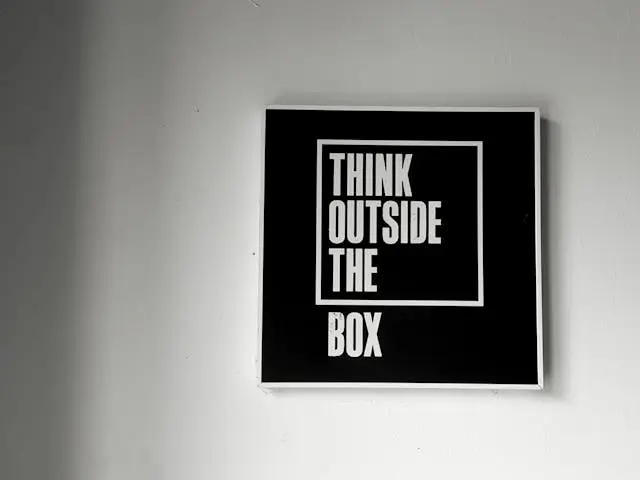
How to Learn UX Design Self-Taught at 40: A Comprehensive Guide
Embarking on a journey to learn UX design self-taught at 40 can be both exciting and daunting. The digital landscape is constantly evolving, and User Experience (UX) design stands at the intersection of technology, psychology, and creativity. If you’re considering a career pivot or simply want to add valuable skills to your professional toolkit, UX design offers a rich field with growing demand. This comprehensive guide will walk you through a structured approach to learn UX design self-taught at 40, leveraging your existing life experience while building new technical and creative skills.
Why UX Design is Perfect for Career Changers at 40
The decision to learn UX design self-taught at 40 is often accompanied by concerns about age barriers in the tech industry. However, UX design uniquely values the life experience and perspective that comes with age. As a 40-something professional, you bring several advantages to the table that younger counterparts might lack:
First, you possess a wealth of accumulated professional skills—project management, communication, presentation, conflict resolution—that are invaluable in UX design roles. Second, your understanding of human behavior and empathy, refined through decades of life experience, provides crucial insights for creating user-centered designs. Finally, your established professional network can be leveraged for mentorship, feedback, and potential client opportunities as you transition.
The field of UX design itself is remarkably age-inclusive compared to many tech disciplines. Companies increasingly recognize that diverse design teams—including age diversity—create better products for diverse user bases. Your perspective as someone who has witnessed the evolution of digital interfaces from their early days gives you a unique vantage point on usability challenges.
Creating Your Custom Curriculum to Learn UX Design Self-Taught
Without the structure of a formal degree program, creating a comprehensive self-education plan is essential to learn UX design self-taught at 40. Your curriculum should cover core UX fundamentals while accommodating your specific learning style and schedule constraints.
Begin by mastering UX fundamentals through resources like “Don’t Make Me Think” by Steve Krug and “The Design of Everyday Things” by Don Norman. These classics provide the theoretical foundation of user-centered design that underpins all UX work. Complement these with more recent publications like “UX for Beginners” by Joel Marsh for practical, contemporary applications.
Online learning platforms offer structured courses specifically designed for self-paced learning. Coursera’s UX Design Specialization from the University of Michigan and Google’s UX Design Professional Certificate are comprehensive programs worth considering. For more focused skill-building, Interaction Design Foundation offers specialized courses on research methods, information architecture, and usability testing—all crucial areas to learn UX design self-taught at 40.
Create accountability by setting specific completion goals for each learning module and tracking your progress. Consider forming a study group with other self-taught designers through platforms like Meetup or Discord communities. Having peers to discuss concepts with dramatically enhances retention and provides motivation during challenging learning phases.
Essential Review: Think Like a UX Researcher
Essential Review: Think Like a UX Researcher Photo By Amazon.com Think Like a UX Researcher is a standout guide for
Effective Storytelling: How to Present Your Career Transition to Tech in Interviews
Effective Storytelling: How to Present Your Career Transition to Tech in Interviews https://secondactux.com/wp-content/uploads/2025/05/8120374-sd_338_640_25fps.mp4 Video By MART PRODUCTION Are you preparing
How Design Thinking Can Be Your Ally in Transitioning to UX
How Design Thinking Can Be Your Ally in Transitioning to UX https://secondactux.com/wp-content/uploads/2025/05/7213054-sd_426_240_25fps.mp4 Video By SHVETS Production Making a career shift
Leveraging Life Experience in Your UX Design Journey
One significant advantage when you learn UX design self-taught at 40 is your accumulated life and work experience. Unlike younger designers who may struggle to understand diverse user needs, your experiences provide valuable intuition about human behavior and problem-solving approaches.
Your previous career almost certainly equipped you with transferable skills relevant to UX design. If you worked in marketing, you already understand audience targeting and messaging. From customer service roles, you’ve gained insights into user pain points and expectations. Project management experience gives you the ability to coordinate complex workflows—essential for UX projects. Even seemingly unrelated careers like teaching or healthcare provide deep understanding of human psychology and communication that directly applies to creating intuitive user experiences.
To effectively leverage this experience, maintain a journal documenting instances where your background gives you unique insights into design challenges. For example, if you previously worked in finance, your understanding of how people think about money management could provide valuable perspectives when designing financial applications. This journal becomes a powerful portfolio piece demonstrating your unique value proposition as a designer who started to learn UX design self-taught at 40.
Building Technical Skills Without Overwhelm
The technical aspects of UX design can seem intimidating when you learn UX design self-taught at 40, especially if you don’t have a background in design software or coding. The key is approaching technical skill development methodically, focusing on practical application rather than theoretical perfection.
Start with sketching—yes, with pencil and paper. Before diving into digital tools, develop your ability to quickly visualize ideas through rough sketches. This fundamental skill helps you iterate rapidly and communicate concepts effectively. Apps like Paper by WeTransfer or Procreate (if you have an iPad) can help bridge the transition to digital sketching.
For digital prototyping, focus initially on one mainstream tool rather than trying to master several simultaneously. Figma has emerged as an industry standard with excellent free learning resources and a gentle learning curve, making it ideal when you learn UX design self-taught at 40. Dedicate 30-60 minutes daily to tutorials and practical exercises rather than sporadic marathon sessions.
Understanding basic coding concepts enhances your collaboration with developers. Platforms like Codecademy offer interactive HTML and CSS courses designed for absolute beginners. You don’t need to become a programmer, but understanding the technical constraints helps you design more implementable solutions.
Create a progressive skill development calendar that builds competencies in logical sequence—start with wireframing, then move to interactive prototyping, and finally explore more advanced interactions. This prevents the overwhelm that often derails self-taught learners.
Crafting a UX Portfolio That Highlights Your Unique Perspective
As you learn UX design self-taught at 40, creating a compelling portfolio becomes essential for demonstrating your capabilities to potential employers or clients. Your portfolio should showcase not just your design skills but also your mature problem-solving approach and research methodology.
Rather than waiting until you feel “ready,” start documenting your learning journey immediately. Include case studies from practice projects, showing your process from initial research through ideation to final design. Tools like Notion or WordPress make it easy to create professional-looking portfolio sites without advanced technical skills.
Leverage your life experience by choosing portfolio projects that connect to industries you’re familiar with. This approach allows you to demonstrate domain knowledge alongside emerging design skills. For example, if you worked in healthcare, redesigning a patient portal interface allows you to showcase both UX techniques and healthcare insights—a powerful combination as you learn UX design self-taught at 40.
For each portfolio piece, emphasize the “why” behind design decisions—your research methods, how you identified user needs, and how solutions address specific problems. This process-focused approach demonstrates your strategic thinking, which often matters more to employers than pixel-perfect designs, especially for career changers.
Consider including a “learning journey” section in your portfolio, transparently documenting your transition into UX design. Many clients and employers find this growth mindset and determination inspiring, turning your career change story into an asset rather than a liability.
Building Your Professional Network in UX Design
Networking takes on special importance when you learn UX design self-taught at 40 without the built-in connections of a design degree program. Your existing professional network, however, likely contains valuable connections that younger designers lack.
Begin by reconnecting with former colleagues who work at companies with digital products. Express your new direction and ask for introductions to their design or product teams. These warm connections often lead to informational interviews or mentorship opportunities that provide industry insights and potential job leads.
Online communities like UX Design Community on Discord or the Interaction Design Foundation forums offer spaces to ask questions, share work for feedback, and connect with fellow practitioners. Being active in these communities—answering questions where you can and participating in discussions—builds your reputation and network simultaneously.
Local meetups (now often virtual) provide opportunities to connect with UX professionals in your area. Platforms like Meetup.com list regular UX gatherings in most major cities. Even as a newcomer to the field, you can volunteer to help organize events, giving you direct contact with speakers and established professionals.
Consider creating content to position yourself as a thoughtful contributor to the field. Writing articles about your journey to learn UX design self-taught at 40 or sharing case studies on Medium’s UX Collective can attract like-minded professionals and demonstrate your engagement with the discipline.
Navigating the Job Market as a Self-Taught UX Designer at 40
The transition from learning to employment presents unique challenges when you learn UX design self-taught at 40. However, with strategic positioning and realistic expectations, you can successfully navigate this phase.
Begin with freelance projects to build real-world experience. Platforms like Upwork or projects for non-profits through Catchafire allow you to tackle manageable projects while building your portfolio. These experiences provide valuable client interaction skills and testimonials that strengthen your position in the job market.
When applying for roles, emphasize the unique value proposition of your combined experience: “25 years in customer service plus cutting-edge UX skills” is more compelling than trying to compete with younger designers on technical skills alone. Position yourself as someone who uniquely understands users in specific demographics or industries based on your previous career experience.
Consider UX-adjacent roles as potential entry points. Positions like UX Researcher, Content Strategist, or Product Owner often value your transferable skills while providing pathways into more design-focused roles. These positions can be less competitive than pure UX Designer roles while still allowing you to apply your knowledge as you continue to learn UX design self-taught at 40.
Prepare for interviews by developing concise narratives about your career transition that frame it as a strength rather than a limitation. Practice articulating how your previous experience enhances your approach to UX problems, providing specific examples where possible.
Maintaining Momentum in Your UX Learning Journey
The self-taught path requires sustained motivation over months or years as you learn UX design self-taught at 40. Developing strategies to maintain momentum through inevitable challenges is crucial for success.
Create a structured learning routine that fits your life circumstances. Whether it’s daily 45-minute sessions before work or dedicated weekend blocks, consistency matters more than duration. Use time-tracking tools like Toggl to measure your learning hours, providing concrete evidence of progress that motivates continued effort.
Connect with accountability partners—other self-taught designers at similar stages—for regular check-ins on goals and progress. These relationships provide both support during struggles and celebration of achievements, making the journey less isolating.
Participate in design challenges like Daily UI or monthly hackathons to apply your skills to concrete problems. These time-bound projects force you to complete work rather than perfectionism, building both your portfolio and confidence as you learn UX design self-taught at 40.
Practice reflection by maintaining a learning journal documenting new concepts, successful applications, and areas for improvement. Review this journal monthly to recognize your progress—especially valuable during inevitable plateaus when advancement seems slow.
FAQ About Learning UX Design Self-Taught at 40
Q: Is 40 too old to transition into UX design? A: Absolutely not. UX design values diverse perspectives and life experience. Many successful designers have transitioned in their 40s, 50s, and beyond, bringing valuable insights from previous careers.
Q: How long does it take to become job-ready in UX design? A: With dedicated study of 10-15 hours weekly, most career changers can build fundamental skills in 6-9 months. However, becoming competitive for mid-level positions typically requires 1-2 years of combined learning and project experience.
Q: Do I need to learn to code to be a UX designer? A: No, but understanding basic HTML/CSS principles helps you design more implementable solutions and communicate effectively with developers. Focus on UX principles first, then add technical skills incrementally.
Q: Should I get a UX certification? A: Certifications can validate your knowledge and demonstrate commitment, but portfolios ultimately matter more. Invest in certifications only after building fundamental skills if you find them creating barriers in your job search.
Q: How do I compete with younger designers who have formal degrees? A: Leverage your unique value proposition—combining fresh UX skills with decades of professional experience. Focus on industries where your previous expertise provides unique insights into user needs and business contexts.
Have you started learning UX design later in your career? What challenges or advantages have you experienced? Share your journey in the comments to help others navigating similar transitions!

